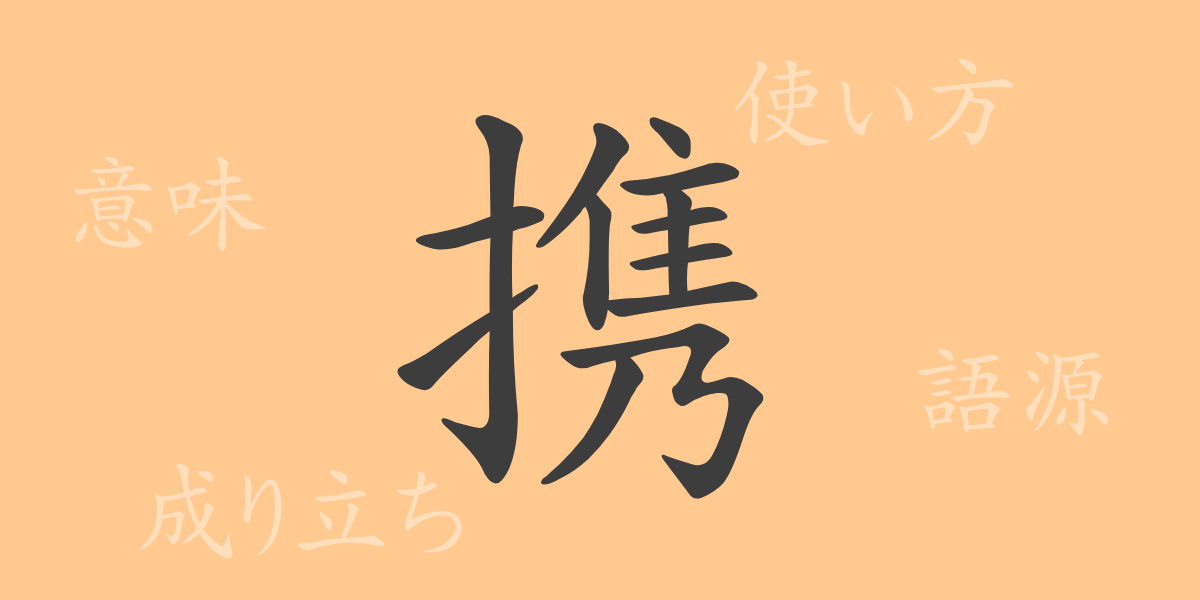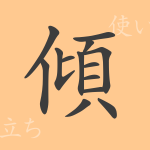The meanings of kanji are deeply rooted in their shapes and histories. The 常用漢字(じょうようかんじ, jouyou kanji) “携(けい, kei)” is no exception. This article will delve into the origin, modern usage, and idioms and proverbs involving the kanji “携(けい, kei).” Let’s explore the intricate and beautiful world of “携(けい, kei)” to deepen our understanding of the Japanese language.
Origin of 携(けい, kei) (Etymology)
The kanji “携(けい, kei)” is composed of “扌(てへん, tehen)” which means hand, and “隽(けい, kei)” which originally shared the same roots as “俊(しゅん, shun)” meaning superior or outstanding. This combination implies carrying something superior in one’s hand, thus “携(けい, kei)” came to mean “to carry” or “to hold in one’s hand.” In ancient China, there was a cultural practice of always carrying valuable items, and “携(けい, kei)” symbolized this action.
Meanings and Uses of 携(けい, kei)
In modern Japanese, “携(けい, kei)” is widely used to mean “to carry something by hand.” This kanji is especially used when referring to portable items like 携帯電話(けいたいでんわ, keitaidenwa) or mobile phones, and 携帯用(けいたいよう, keitaiyou) or portable items. Additionally, it is used in the term 携わる(たずさわる, tazusawaru) to mean “to be involved in” or “to participate in” an activity or project.
Readings, Stroke Count, and Radical of 携(けい, kei)
The kanji “携(けい, kei)” has various readings and components that contribute to its rich meaning.
- Readings: The on’yomi (Chinese reading) is “ケイ(けい, kei),” and the kun’yomi (Japanese reading) includes “たずさ.える(tazusaeru)” and “たずさ.わる(tazusawaru).”
- Stroke count: “携(けい, kei)” has 13 strokes.
- Radical: The radical is “扌(てへん, tehen),” meaning hand.
Idioms, Expressions, and Proverbs Using 携(けい, kei)
There are numerous idioms and expressions that include “携(けい, kei)” in Japanese, reflecting its depth in the language. Here are a few examples:
- 携帯電話(けいたいでんわ, keitaidenwa): A mobile phone that can be carried anywhere.
- 携帯品(けいたいひん, keitaihin): Portable items.
- 関わる(かかわる, kakawaru): To be involved with or to influence something.
- 手を携える(てをたずさえる, te o tazusaeru): To join hands and work together cooperatively.
Conclusion on 携(けい, kei)
The kanji “携(けい, kei)” has maintained its fundamental meaning of carrying by hand throughout its history, evolving to represent modern portable items like 携帯電話(けいたいでんわ, keitaidenwa). It also encompasses abstract meanings, such as involvement or participation in activities. Used in various forms within the Japanese language, “携(けい, kei)” highlights the richness and evolution of words. Understanding “携(けい, kei)” deepens our appreciation for the diverse and dynamic nature of Japanese.

























